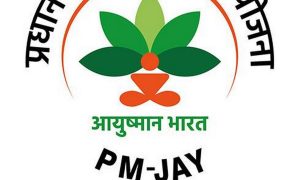The Union government has no plan to shift to the old pension scheme (OPS), which five states have opted for so far, the Centre told the Lok Sabha, underlining that accumulated back contributions of subscribers cannot be used by states to revert to the earlier programme under law.
This is the first time the Centre has officially ruled out going back to the previous regime of pensions, and also clarified whether past contributions from subscribers can be utilised to revert to OPS, an unfunded programme where the costs of retirement benefits are borne entirely by the State. The Pension Fund Regulatory & Development Authority Act does not allow such a transfer, minister of state for finance Pankaj Chaudhary stated in a written reply on Monday.
Pensions for government staffers is a politically polarising issue, with several Opposition-ruled states switching to OPS, which offered pensioners monthly benefits of 50% of their last-drawn salary. The new National Pension Scheme (NPS) in force is a market-linked pension plan, launched in 2004, and offers no guaranteed base amount.
At various points over the course of past two years, state governments in Rajasthan, Chhattisgarh, Jharkhand, Punjab and Himachal Pradesh, following poll assurances, reverted to OPS for staffers on the states’ payroll by notifying the central government and the Pension Fund Regulatory and Development Authority (PFRDA).
“No such proposal is under consideration of government for restoration of OPS in respect of central government employees,” the minister stated in his written reply.
“A committee has been set up under the chairmanship of Finance Secretary to look into the issue of Pensions under National Pension System (NPS) in respect of government employees and to, inter alia, examine whether in the light of the existing framework and structure of the National Pension System, as applicable to Government employees, any changes therein are warranted,” he added.
Read More: How Airlines Will Compensate For Cancelled Or Delayed Flights Based On New DGCA Rules
He was responding to a query by lawmakers Naba Kumar Sarania (Independent), Deepak Baij (Congress) and Krupal Balaji Tumanu (Shiv Sena), who sought to know if the government had plans to go back to the old scheme.
Under the new national pension scheme, nearly 8.7 million federal and state-government employees contribute 10% of their basic salary, while the government pays 14%, to a pension fund. The final payout depends on returns on that fund, which is mostly invested in government debt instruments.
In October, HT reported that the Union government was likely to amend the national pension scheme to ensure employees get at least 40-45% of their last-drawn salary as retirement payouts based on recommendations of a high-level panel looking into the matter.
“The government is not going back to the unfunded old scheme but a better model can be put in place that gives an assured basic amount, which will be indexed to inflation,” a person aware of the matter told HT on Tuesday.
Read More: Mahadev betting case: App owner Ravi Uppal detained in Dubai
The ruling Bharatiya Janata Party-led central government, which faces general elections next year aside from polls in four states, had set up a committee led by finance secretary TV Somanathan in April this year to review the current pension system.
The altered pension scheme will continue to be linked to market returns, but the government could work out a methodology to give a minimum of, say, 40% of an employee’s last drawn salary, the person cited above said. This means that the government would have to intervene to make good the shortfall in pension in case the payouts are less than whatever the base amount is. Currently, employees earn average returns of between 36%-38% on average.
OPS is fiscally unsustainable and could worsen the debt of state governments, according to Soumya Kanti Ghosh, group chief economic adviser of State Bank of India, the country’s largest lender. In 2023-24, India’s federal pension budget was ₹2.34 lakh crore.
But OPS is politically attractive because offers an assured benefit to the retiree, fixed at 50% of the last drawn basic pay. Also, like their salaries, pensions under the old scheme are routinely hiked to account for an increase in inflation.
According to Ghosh’s research, pension liabilities of state governments over the long term has showed a sharp increase. The compounded annual growth in pension liabilities for the 12-year period, ended 2021-22, was 34% for all state governments. As of 2020-21, the pension outgo as a percentage of revenue receipts stood at 13.2%, the research showed.





































